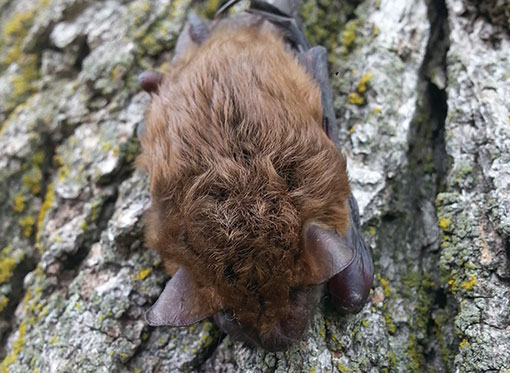Tiny bats spur removal of trees

KATHY A. BOLTEN Mar 15, 2022 | 3:56 pm
2 min read time
575 wordsAll Latest News, Business Record Insider, Real Estate and DevelopmentTwo species of bats are having a large effect on the development of a golf entertainment venue planned on 12 acres in Johnston.
The city of Johnston is allowing Stoye & Kann Development, the group behind the planned $80 million project, to begin removing trees even though the sale of the property hasn’t yet been finalized. 
The Indiana brown bat and the northern long-eared bat, both designated as endangered species, roost in the trees in the spring and summer months, making removal of the trees illegal.
In Iowa, that means trees in areas where the bats are found can’t be removed between mid-March and mid-October.
“Both of those bats roost in trees that are essentially dying or have loose bark,” said David Wilwerding, Johnston’s community development director. “Trees can only be removed when the bats aren’t roosting so then you’re not impacting their habitat.”
The Indiana brown bat (pictured) and the northern long-eared bat are among 1,300 endangered species – those threatened of becoming extinct – in the United States, according to the U.S. Department of Agriculture. Both species weigh less than an ounce.
The Indiana brown bat spends about six months of the year in Midwestern states in stands of trees near water, according to Iowa State University Extension and Outreach. Pregnant female bats roost in maternity colonies of 100 or more bats. Male bats roost alone or in small groups.
The northern long-eared bat is found in east and north-central parts of the United States and in Canada. In the winter months, the bats hibernate in caves and mines, according to Bat Conservation International. In the spring, pregnant female bats live in colonies underneath loose tree bark or in hollowed tree cavities.
Both bat species have been adversely affected by white-nose syndrome, a disease caused by a fungus that grows in cold, dark and damp places. The disease, for which there is no known cure, primarily affects hibernating bats. In the past decade, millions of bats have died from the fungus.
The decline in those particular bat populations has also been linked to tree removal, according to the USDA.
In an effort to help replenish the population of the Indiana brown and northern long-eared bats, the federal government only allows trees in areas where the bats are found to be removed during the months the mammals are hibernating.
The tree removal on the Johnston property must be completed by March 15. If it’s not done by then, special approvals must be obtained to complete the removal or it can be finished after Oct. 15.
Wilwerding said about 85% of the trees on the property are invasive species or ash, which are being destroyed by the emerald ash borer.
“It’s certainly not a quality forest,” he said. “We are working with the developer to clean up the area and bring back a truly vibrant woodland area adjacent to their project.”
The development agreement between the city and Stoye & Kann Development allows the development group to begin removing the trees before acquiring the property. The agreement also requires the development group to spend between $50,000 and $125,000 on new tree plantings and prairie and savannah improvements.
“When everything is done, that area will be a much more healthy environment that will succeed in the long term,” Wilwerding said.








